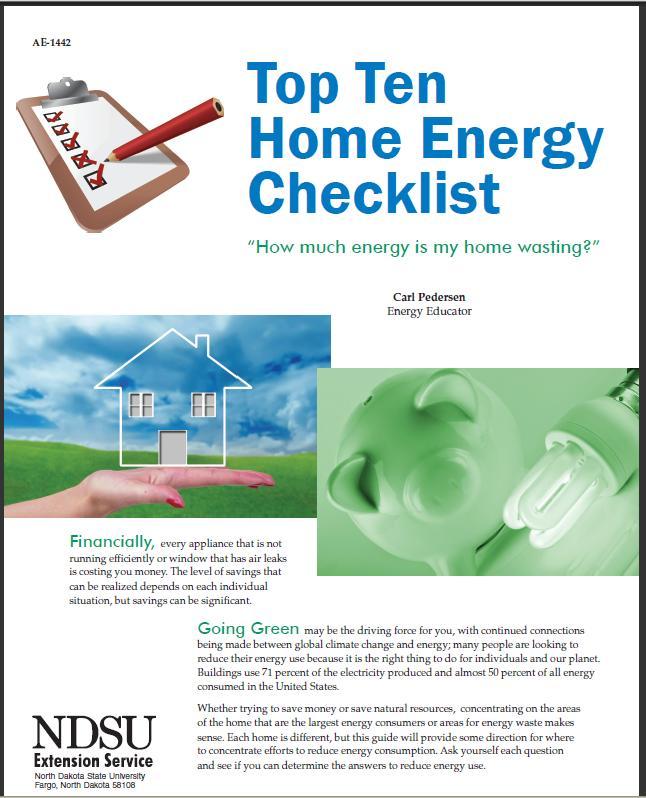Home Energy
Heating and Cooling, Home Construction/Insulation, Appliances, Lighting, Energy Audits.
Heating and Cooling:
- ENERGY STAR website - website with product information including tax credits for energy related items
- Ground Source Heat Pump (.pdf) Extension publication provides information on geothermal use
- IGSHPA accredited installers list. - website listing ground source heat pump installers
- Corn and Biomass Stoves (.pdf) - basics of heating homes with corn stoves
- Fuel Cost Comparison (.pdf) - tool to compare cost of various heating fuels
Home Construction/Insulation: (.pdf) - information on insulation types as well as installation tips.
- Air-to-Air Heat Exchangers (.pdf)
Lighting:

The best way to save money and natural resources is to not use energy. The simplest way to reduce energy with lighting is to turn lights off when not in use. For lights that are being used, ensure energy-efficient light bulbs are installed. Compact fluorescent light bulbs use up to 75 percent less energy than incandescent bulbs and last much longer. Use natural lighting when possible. Homeowners pay for the watts used, so the lower the watt rating on lighting devices, the less they have to pay to use them.
Lighting Resources:
ENERGY STAR CFL Frequently Asked Questions (.pdf)
For more about home energy go here.
Energy Audits:
The NDSU Extension service has developed a procedure where homeowners can do their own basic energy audit using an infrared thermometer. By following along with some tips provided in the publication Determining Insulation and Air Infiltrations Levels Using an Infrared Thermometer and the accompanying questionnaire a homeowner can find sources of air leaks as well as basic ideas of insulation levels in a home.





